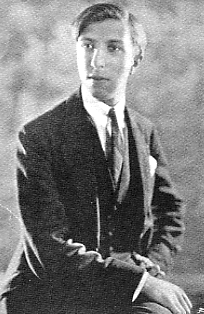 Washington has heard few recitalists this season more interesting than Sara Davis Buechner, an artist with wide musical sympathies. At the National Gallery of Art on a sunny Sunday, multiple-prize-winner Buechner treated a modest crowd to a rare achievement: overcoming the swimming pool acoustics of the West Garden Court by sheer willpower.
Washington has heard few recitalists this season more interesting than Sara Davis Buechner, an artist with wide musical sympathies. At the National Gallery of Art on a sunny Sunday, multiple-prize-winner Buechner treated a modest crowd to a rare achievement: overcoming the swimming pool acoustics of the West Garden Court by sheer willpower.Every note Ms. Buechner played came through loud and clear, even in some passages where perhaps not so many notes were meant to be heard in so brief a time period. Buechner is a powerful player, and she likes the audience to know it. The power was not so evident in the opening numbers (two transcriptions by her teacher, Mieczyslaw Munz, a renowned concertizer in his own right and also teacher to Ann Schein, Emanuel Ax, and Ilana Vered): Handel’s minuet from Berenice and Haydn’s serenade from the op. 3 quartet. The Handel was slow and thoughtful, beautifully phrased but more sarabande than minuet; the Haydn a bit sentimental.
Surprisingly, with this prologue, Buechner launched immediately into Mozart’s F Major Sonata, K. 533/494 (the concluding Rondo, written earlier, was adapted by Mozart for this gem among his sonatas). Here was no drawing-room Rococo, but drama, tension, and a wide range of dynamics: the Allegro, highly contrapuntal, was both lucid and forceful in Buechner’s hands, and the Andante rather romantic, mindful of a Chopin nocturne. Mozart the Romantic prototype -- a fair reading for such a mature and original work. The same expressive approach worked less well in the final Rondo: Allegretto, which at a moderate piece seemed to run down like a clock.
Daniel Ginsberg, Buechner Is The Pianist, But the Score Is the Star (Washington Post, June 13) |
Post-intermission brought a whole new pianistic world: light music by Friml and Gershwin, both of whom Sara Davis Buechner has recorded and rather specialized in. Six miscellaneous pieces from Friml ran the gamut from sentiment (Festival of Roses) to virtuoso display (Bohemian Dance and Staccato Etude), again played with dramatic contrast and great flair. Not so big a jump from that to Gerswin, but … here Buechner was really in her element. Three of her own transcriptions of Gershwin’s pop tunes (not ‘official’ versions from the “Gershwin Songbook” for piano published in the composer’s lifetime, but Buechner’s adaptations from Gershwin’s recorded improvising) set a few toes tapping even in this Palace of Art, blending syncopated swinging with brilliant technique and structural sense — as though this music were by, say, Mozart.
Best for last: Buechner’s way with Rhapsody in Blue (Gershwin’s solo transcription) is controversial to some, fast, dramatic, brilliant, emphasizing contrast over continuity. Why not? It’s a display piece, Gershwin himself liked to have fun with it in performance, and Buechner knocked the socks off it — a home run. Has the Gallery audience given a standing ovation before? Maybe … but this one was deserved, and Buechner’s imaginative Rhapsody makes a nice bookend for this concert season, paired with Fazil Say’s September BSO performance (much liked by Jens).
No comments:
Post a Comment